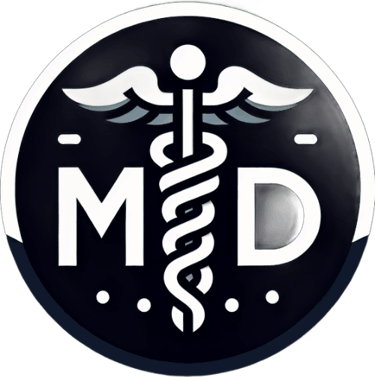Understanding Different Types of Shoulder Pain and Treatment Options
Description of common types of shoulder pain along with procedural interventions that may help to expedite the pain relief.
Marco Duran, MD
2/26/20243 min read


Introduction
Shoulder pain is a common complaint that can significantly affect a person's quality of life. There are various causes of shoulder pain, including glenohumeral joint arthritis and rotator cuff tears. In some cases, these conditions may require intra-articular steroid injections or suprascapular nerve blocks for temporary pain management. Additionally, a suprascapular nerve block performed under fluoroscopy can be used for the diagnosis of suprascapular neuralgia. Should these blocks be effective yet short lasting, a peripheral nerve stimulator may be a reasonable consideration (more on that on a later article). In this article, we will explore these different types of shoulder pain and the treatment options available.
Glenohumeral Joint Arthritis
Glenohumeral joint arthritis is a progressive degenerative condition that affects the shoulder joint. It occurs when the cartilage that cushions the joint wears away, leading to bone-on-bone contact and subsequent pain. This condition is commonly seen in older individuals or those who have experienced previous shoulder injuries. Symptoms of glenohumeral joint arthritis include pain, stiffness, and limited range of motion in the shoulder. Conservative treatments, such as physical therapy and anti-inflammatory medications may provide temporary relief. However, if these measures fail to alleviate the pain, intra-articular steroid injections can be considered.
Intra-Articular Steroid Injections
Intra-articular steroid injections involve the direct administration of corticosteroids into the affected joint. These injections can provide significant pain relief by reducing inflammation and suppressing the immune response. They are commonly used in the management of various joint conditions, including glenohumeral joint arthritis. During the procedure, the shoulder area is cleaned and sterilized. The healthcare professional then uses a thin needle to inject the corticosteroid medication into the joint space. This procedure is usually performed under ultrasound guidance to ensure accurate needle placement. The effects of the injection can last for several weeks to several months, providing temporary relief from pain and inflammation.
Rotator Cuff Tears
Rotator cuff tears are another common cause of shoulder pain. The rotator cuff is a group of muscles and tendons that surround the shoulder joint, providing stability and allowing for a wide range of motion. Tears in the rotator cuff can occur due to acute injuries or degenerative changes over time. Symptoms of a rotator cuff tear may include pain, weakness, and a limited ability to raise the arm. Conservative treatments, such as physical therapy and rest, are often the first line of management. However, if the pain persists or the tear is severe, a suprascapular nerve block may be recommended.
Suprascapular Neuralgia
Suprascapular neuralgia is a condition characterized by pain and dysfunction of the suprascapular nerve. It can result from various causes, including compression of the nerve, trauma, or inflammation. The symptoms may include shoulder pain, weakness, and limited range of motion. Performing a suprascapular nerve block under fluoroscopy can help diagnose suprascapular neuralgia. If the pain is relieved after the injection, it suggests that the nerve is involved in the pain pathway. This information can guide further treatment decisions, such as physical therapy, medication management, or even surgical interventions.
Suprascapular Nerve Blocks
A suprascapular nerve block is a procedure that involves the injection of a local anesthetic and corticosteroid around the suprascapular nerve. This nerve is responsible for providing sensation to the shoulder joint and controlling certain shoulder muscles. By blocking the nerve, pain signals from the shoulder can be temporarily interrupted, providing relief. To perform a suprascapular nerve block, a healthcare professional will use fluoroscopy (a type of real-time X-ray) to guide the needle into the correct position. Once in place, a combination of local anesthetic and corticosteroid is injected around the nerve. The effects of the block can last for several weeks, allowing for pain relief and potentially aiding in the diagnosis of suprascapular neuralgia.
Conclusion
Shoulder pain can significantly impact a person's daily activities and overall well-being. Understanding the different types of shoulder pain, such as glenohumeral joint arthritis and rotator cuff tears, is crucial in determining the appropriate treatment options. Intra-articular steroid injections and suprascapular nerve blocks can provide effective pain relief for these conditions. Additionally, performing a suprascapular nerve block under fluoroscopy can aid in the diagnosis of suprascapular neuralgia. If you are experiencing shoulder pain, it is essential to consult with a healthcare professional to determine the underlying cause and develop a personalized treatment plan.
